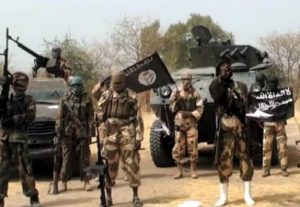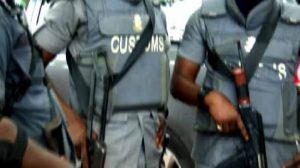Confessions of a former torturer
Jose Barrera gulped down a double shot of Sambuca before he began to talk about his past as a torturer and murderer.
He recalled how he nearly suffocated people with rubber masks, how he attached wires to their genitals and shocked them with electricity, how he tore off a man’s testicles with a rope.
“We let them stay in their own excrement,” he said, his gold front tooth reflecting the dim lamplight. “When they were very weak, we would take them to disappear.”
Images such as these cast a shadow over the lives of Barrera and other men who served in Battalion 316, a CIA-trained military unit that terrorized Honduras for much of the 1980s.
At a time when Honduras was crucial to the U.S. government’s war on communism in Central America, the battalion was created and trained to collect intelligence. But it also stalked, kidnapped, tortured and murdered hundreds of Honduran men and women suspected of subversion.
At least 184 of the battalion’s victims are missing and presumed dead. They are called “desaparecidos,” Spanish for the “disappeared.”
In hours of interviews over two weeks in Toronto, where they live in exile, Barrera and other former members of the battalion — Florencio Caballero and Jose Valle — told The Sun how the unit operated.
Each of the men said he was trained by instructors from the CIA, sometimes together with instructors from Argentina, where a campaign against suspected subversives left more than 10,000 dead or disappeared in the 1970s.
Some training was conducted at an army camp in Lepaterique, a town 16 miles west of the capital, Tegucigalpa, the men said. Other sessions were held at a base in the United States whose location was kept secret even from them.
In separate interviews, they described the courses in the same way: CIA officers taught them “anti-guerrilla tactics” — how to stake out suspects’ homes, use hidden cameras and tap telephones, and how to question prisoners.
The training of battalion members in the early 1980s was confirmed in 1988 by Richard Stolz, then-CIA deputy director for operations, in closed-door testimony before the Senate Select Committee on Intelligence. The testimony was recently declassified at the request of The Sun.
Stolz and the former members of Battalion 316 said that torture was discouraged by CIA instructors in what Stolz called a “human resources exploitation or interrogation course.”
But the former battalion members said the CIA knew of their use of torture. When a CIA officer visited one of the battalion’s secret jails, he saw evidence of torture and did not protest, the battalion members said.
“The Americans knew everything we were doing,” Caballero said. “They saw what condition the victims were in — their marks and bruises. They did not do anything.”
The full names of the CIA officers were not known to their Honduran proteges. The head CIA trainer was known as “Mr. Bill,” according to the battalion members.
Stolz told the Senate intelligence committee that “Mr. Bill” was a CIA trainer in Honduras and that he was killed in the April 1983 bombing of the U.S. Embassy in Beirut, Lebanon.
“Mr. Bill” reportedly was a former member of the U.S. Army special forces.
Caballero, Barrera and Valle said that although the CIA instructors discouraged torture, Honduran commanders demanded it, and that the penalty for disobedience or trying to leave the unit would have been death,
“Within the organization, there were many who were not in agreement, but they couldn’t get out,” Caballero said. “If we wanted to leave, we would have to leave dead.”
The Hondurans escaped to Canada with the help of human rights groups that took their testimony.
Their accounts, which follow, were corroborated by interviews with survivors, by court testimony, by human rights groups such as Amnesty International and Americas Watch, and by a 1993 Honduran government report on disappearances.
Florencio Caballero said the prisoner who haunts him the most is German (pronounced “HERR-mon”) Perez Aleman, a man he befriended and then betrayed.
Caballero said he enticed the union organizer to join him in a phony scheme to steal guns.
On Aug. 18, 1982, as they prepared to take the weapons from a local police station, Perez was seized by five men wearing disguises.
“German fought a lot. They bit his ear,” recalled Caballero, who was a member of Battalion 316 from 1980 until he fled in 1984. “They wore false mustaches and beards and wigs. German pulled the wig off one of them. They finally dominated him and pushed him into a blue Datsun.”
In a secret jail on the outskirts of Tegucigalpa, the men tortured Perez and accused him of being an armed leftist, Caballero said.
Then they executed him.
Caballero knew the charges against Perez were false. He knew that Perez didn’t even own a gun. But he did nothing to stop the execution.
“It makes me feel very bad because I met him. I became friends with him, and I turned him over,” Caballero said. “They killed him unjustly.”
He said Perez was held in a country home where as many as 30 prisoners at a time were kept in crowded quarters.
“When there was no more room to keep them there, and they weren’t providing much information, they killed them. The prisoners always ended up dead.”
The 37-year-old Caballero is a short, husky man who walks with the swagger of a weightlifter. He has a sixth-grade education and supports his family by working part time as a bus driver and as a maintenance man in his Toronto apartment building.
In the midst of talking about his past over dinner at a Toronto restaurant, Caballero suddenly threw a beefy arm into the air and shouted, “Goal!” He had caught a glimpse of the television above the bar and let out a cheer when he saw that the Spanish national soccer team had scored against the Italians in a World Cup match.
Grinning, Caballero peeled a shrimp, popped it into his mouth and washed it down with Budweiser. Then he returned to his story of torture and murder.
He has told this story many times. In October 1987, he described Battalion 316’s operations before the Inter-American Court of Human Rights in Costa Rica. He later spoke with the staff of the Senate intelligence committee about CIA collaboration with Battalion 316.
Caballero’s accounts have been consistent over the years. Substantial parts of his testimony have been corroborated by prisoners of Battalion 316, former members of the unit and by the CIA.
The only dispute is over Caballero’s role in Battalion 316: He says that he was not a torturer.
“I was an interrogator,” Caballero said.
But a former army commander and a former member of Battalion 316 remember him differently.
Col. Mario “El Tigre” Amaya, former head of the Honduran special forces, knew Caballero before he transferred from the regular army to the intelligence unit.
In an interview at his home in Tela on the sandy Caribbean coast of northern Honduras, Amaya, whose nickname means “the tiger,” recalled Caballero as “a cold-blooded killer.”
“Sometimes he killed because he was ordered to,” Amaya said. “Other times, because he wanted to do it.”
Fausto Reyes, a former member of Battalion 316, recalls him similarly.
“Florencio Caballero was one of the most violent interrogators of 316,” he said.
Caballero said he cooperates with investigations into the crimes of Battalion 316 as a way to atone.
“I don’t want people to think my heart is pure, but what I’m expressing comes from my heart,” he said. “The truth is, this caused a lot of harm to Honduras.”
Battalion headquarters was a flat, gray cinder-block building that once housed the Francisco Morazan athletic club, in the 21st of October neighborhood of Tegucigalpa.
The battalion was organized by Col. Gustavo Alvarez Martinez, commander of the Honduran military police, and remained under his authority after he became head of the Honduran armed forces in 1982 with the rank of general.
Alvarez appointed Capt. Alexander Hernandez to run the battalion. Caballero said execution orders came down to the battalion from Alvarez and Hernandez.
Caballero recalled the order to kill Angel Manfredo Velasquez, a 35-year-old graduate student, teacher and political activist. The father of three was abducted by Battalion 316 on Sept. 12, 1981.
“By order of Alvarez, to be sure that no one would ever find his body, they took him from Tegucigalpa and stabbed him to death,” Caballero said. “Then they cut his body to pieces with a machete and buried the pieces in different places along the road from Tegucigalpa to Progreso de Yoro.”
Hernandez, now a colonel in the Honduran military police, denied any involvement with disappearances or murders.
“There is no proof against me,” said the tall, thin man, sitting erect with his arms across his chest in his office in Tegucigalpa.
In interviews with The Sun, and in court testimony, Caballero described the CIA role in training members of Battalion 316, most of whom never attended high school but had basic reading and writing skills.
He said that he and about 25 other Hondurans were taken in a Honduran air force plane in 1980 to what he thought was Texas.
“We went to a military base. It was so private. There was no TV, no cable, only videotapes,” Caballero recalled. “The [Honduran] officers knew where we were. They would say, ‘here in Texas.’ It was like a college. We had everything we needed — food, drink, a swimming pool.”
The CIA instructors, Caballero said, taught that torture rarely achieved desired results. Instead, the instructors showed the students forms of psychological pressure: how to study prisoners, discover what they loved and what they hated, and then to use that knowledge against them.
“If a person did not like cockroaches, then that person might be more cooperative if there were cockroaches running around the room,” Caballero said.
But while the CIA instructors discouraged physical torture, Alvarez demanded it.
“Alvarez said, ‘I’m in charge here. I do not like interrogations without physical torture,'” Caballero recalled. “As a result, physical torture continued.”
The battalion held its prisoners in dozens of places — an old military clubhouse, an athletic center and the country villas of military officers.
German Perez was detained in the country home of Col. Amilcar Zelaya, former head of the Honduran military police force, Caballero said. The two-story, peach-colored house in Tamara, 10 miles outside Tegucigalpa, is surrounded by mango and orange trees, and can barely be seen from the road.
“Many died there,” Caballero said.
Caballero was based on the southern edge of Tegucigalpa, near the Military Industries complex, INDUMIL.
Scattered buildings served as barracks for the battalion. Prisoners were kept in a one-story, circular building that was once a clubhouse for an artillery brigade.
Neither judges, attorneys nor prisoners’ relatives were permitted visit INDUMIL.
When judges ordered the military to reveal a captive’s whereabouts, Caballero said, battalion members would mock them. “We would laugh at them and say, ‘Why are they asking about that one? That one is already dead.'”
Caballero joined the Honduran military as did many of its soldiers — he was pressed into service.
In 1977, as he sat in a theater watching a movie with a girlfriend, soldiers burst in and ordered the women to leave. The men were loaded into buses and taken to a military barracks for training.
Caballero said he spent a year in an infantry brigade in Santa Rosa de Copan, a town on the Caribbean, where he earned a reputation for violence, according to other members of the Honduran military. He said he was invited in 1980 to become a member of a “special intelligence unit,” the unit that later became known as Battalion 316.
Unit leaders told him that Battalion 316 would help save Honduras from communism, but Caballero said he joined for the money.
“I didn’t do it because I liked it, nor because I had ideas from the far right,” he said. “I never considered myself an ultra right-wing person or a leftist. … In Honduras, if someone comes and offers you a very high salary, of course you’re going to accept.
“Alvarez Martinez said to us that we would earn the salary of an officer, 750 lempiras a month [then worth $375]. In that time, that was very good money,” Caballero said.
Caballero said that he left Battalion 316 in 1984 because he had gotten married and his wife pressured him to quit.
“She told me what I was doing was bad.”
Two years later, he said, members of the battalion shot at him with a machine gun. Caballero said he had begun giving information about Battalion 316 to human rights investigators, and that battalion leaders wanted him dead. He was not injured, but said he knew that the attacks would continue if he stayed in Honduras.
He fled Honduras in 1986.
Jose Valle described the techniques of torture — very simple, very painful. One favored technique, Valle said, was to force a prisoner to stand naked on a chair, then to tie a basket to his testicles. As the torturer asked questions, he filled the basket with rocks or corn and swung it back and forth.
“There was nothing to it,” Valle said.
Valle, now 37, is a burly man with a round face, curly hair and a sparse beard. As he speaks about the pain he inflicted, he interjects pleas for understanding and forgiveness. Unemployed, separated from his wife, and living in public housing in Toronto, he spends his days watching his small children and brooding about his past.
“I was involved. Yes, I participated. Yes, I was involved with torture,” Valle said, sitting on his couch beneath a wall decorated with the blue and white Honduran flag and portraits of his parents.
“I was doing a job,” Valle said, “something I did to give food to my kids. I knew it wasn’t right because other families were sacrificing their loved ones.”
Valle was 15 when he joined the armed forces. He said his superiors considered him an asset because he could read and write, and because he knew how to drive.
“I wanted to make the army a career,” he recalled. “I wanted to rise and do something.”
Running errands for officers made Valle feel important. He was ++ proudest that he had become useful to Colonel Hernandez, the first head of Battalion 316. “[Hernandez] had so much confidence in me he sent me to buy things like cigarettes for him,” Valle boasted.
Valle’s loyalty earned him an invitation to a three-month training course. Valle said the course was held at an army base in Lepaterique. The instructors were Americans and Argentines, at time when the CIA was paying Argentine counterinsurgency trainers in Honduras.
Valle said the Argentine instructors taught how to use “la capucha” — “the hood” — a rubber mask that was wrapped around a person’s face to suffocate him.
“The rubber is put over the prisoner’s face. They put a foot on the back of the neck and pull up on the rubber. Another person slaps the ears. Before starting, they tell you, ‘When you want to talk more, nod your head.’ The Argentines taught this.”
The Americans, he said, “gave us training in surveillance, disguise and photography. They showed us a camera that looked like a thermos. They told us how to open locked doors and taught us methods of interrogation.”
Afterward, Valle said, he was assigned to Battalion 316, which he considered a high honor. He earned more money. He wore civilian clothes, and he drove nice cars.
Valle said his superiors told him that the work of the battalion was crucial in saving Honduras from the Communists.
“When we started with the battalion and started doing disappearances, [the officers] told us we were doing good for the country,” Valle said. “If the country fell to communism it would be terrible.”
Valle’s first job for the unit was surveillance, following suspects for four to six days to determine the best time to strike.
“We would see if he came straight home or stopped at the restaurant or university,” Valle said. “We would take notes. We would take pictures if none existed. We would use motorcycles, cars.
“We would go out and execute the kidnapping,” Valle said. “We all wore black masks. … If a suspect resisted, we beat him and sometimes shot him in the leg.”
After several months on the kidnapping squad, he was allowed to participate in interrogations. Torture was always used, he said.
Many prisoners were executed, Valle said. He remembers one execution particularly vividly.
Late one night, on a dirt road outside Tegucigalpa, he watched as another battalion member pushed a prisoner from the car and began stabbing him, Valle said. After five thrusts, the prisoner was still alive, murmuring what sounded like a prayer.
Valle said his associate pulled a gun and shot the prisoner. They left the body by the roadside.
“It was the most horrible thing I have ever seen,” he said.
In 1985, Valle decided to leave the battalion and fled to Mexico. He and his family moved to Canada a year later.
He attempts to explain his work for Battalion 316.
“If I get an order and I oppose, I’m risking my life. And what can I do?” he asked, shrugging his shoulders. “I never wanted to wash my hands of what I did. I know I have responsibility.
“I knew what I was doing,” he said. “But there is a point where you go through this door and you cannot go back out through that same door.
“Either you go out dead or you go out disappeared.”
Jose Barrera was one of Battalion 316’s assassins. He keeps in his mind a list of the people he murdered.
There was Jorge Alberto Cubas Carrillo, who Barrera shot to death in December 1983 at a bar in northern Honduras. Barrera recalled that his superior gave him 600 lempiras — the equivalent of about $300.
There was Ricardo Garcia. Barrera said that he and other members of Battalion 316 used a rope to tear off Garcia’s testicles. Then they killed him. Barrera said he earned 300 lempiras and spent it at a June fair.
In August 1985, Barrera thrust a knife into the abdomen of Juan Hernandez Dominguez.
“I did it to earn merit,” he said.
For five years, Barrera gained privileges and money in Battalion 316. Now 36, he is a thin man with small eyes the color of coal and thick, black eyebrows. In an interview with The Sun and in a 16-page sworn statement to the Committee for the Defense of Human Rights of Honduras (COFADEH) in 1987, Barrera admitted the murders he committed as a member of Battalion 316.
Born to a poor family and never formally educated, Barrera said he joined the army at 14 to escape poverty.
He failed many of the army’s basic training courses because he could not adequately read or write. It appeared unlikely that he would climb through the ranks.
So, in April 1981, when superiors offered him the opportunity to carry a gun and make the equivalent of $250 a month, Barrera took the job.
In 1983, he underwent training at the Honduran military base at Lepaterique, where he said he was taught interrogation methods by eight U.S. and four Argentine instructors.
“The Argentines taught courses on torture,” he said.
Barrera said U.S. instructors later taught him to tap telephones in a course conducted in San Pedro Sula, Honduras’ second-largest city.
He said he served as a torturer and assassin in Battalion 316, traveling the country on “special assignments.”
He said he employed a variety of methods to make prisoners talk. He hogtied and kicked them, pulled the hair off their legs, jolted their bodies with electricity and smothered them with a rubber hood.
If those methods failed, Barrera threatened to harm their families.
“The first thing we would say is that we know your mother, your younger brother, and it’s better you cooperate, because if you don’t, we’re going to bring them in and rape them and torture them and kill them,” he recalled.
“We would show them photos of their family. We would say, ‘We’re going to get your mother and rape her in front of you.’ Then we would make it seem like we went to get the mother.”
In 1986, Barrera said, officers accused him of betraying the battalion because he had friends suspected of being leftists. He had seen another member of Battalion 316 killed for the same reason. Fearing for his life, Barrera deserted in September 1986.
“I knew I was going to disappear,” he said.
A month later he was seized from his home. He says he was taken to a secret jail and tortured.
Forty-eight days later, Barrera was released alive, after a campaign by relatives and leaders of human rights groups.
The activists helped Barrera flee to Mexico. From there, he moved to Canada.
Returning to Honduras would mean certain death, he said.
“First, I look out for me, the safety of my own self.”
Battalion 316 did not operate alone. Officers in all branches the Honduran military helped. The Honduran air force flew prisoners out of the country or to military camps throughout Honduras. Officers in the special forces raided the homes of suspected subversives or captured suspects camped along the Honduran border.
Honduran police stopped suspected leftists and turned them over to the battalion.
One collaborator was Fausto Reyes, chief of motorcycle police in San Pedro Sula from 1980 to 1986. The 39-year-old Reyes described how he helped Battalion 316 stage kidnappings.
He recalled the morning of Jan. 29, 1983, when he pulled over RTC Herminio Deras, a leader of the Honduran Communist Party. Reyes said he turned Deras over to three battalion members dressed in civilian clothes.
“I gave this guy to them alive,” Reyes said. “After that, I went to have a soda and an enchilada. … I returned when I heard the gunshot. … Mr. Herminio Deras was dead. He was there on the street.
“I felt bad as a person. I felt bad as a man. I felt bad as a policeman. I felt like a violator of the law.”
A clean-cut man with smooth, brown skin, a double chin and wide, expressive eyes, Reyes worked for Battalion 316 from 1982 until he fled Honduras in 1988, after he and one of his sons were shot at from an unmarked car.
He was interviewed by The Sun in Brockville, Ontario, where he lives with his wife and five children. Reyes drives a taxi.
Reyes, the son of a banana company manager, joined the police as a bugler at the age of 13. He attended high school at night, graduating in 1974. He was an instructor at a police academy in Tegucigalpa.
In 1980, Reyes was appointed chief of motorcycle police in San Pedro Sula. In Honduras, the police are a branch of the armed forces.
His mentor was General Alvarez, the head of the Honduran armed forces who created Battalion 316.
“I admired him,” Reyes said. “He dressed very neatly. He wanted to build a professional institution. He was very decent with me. He made me feel very good. I thought the doors to my future were open.”
Reyes said that his loyalty to Alvarez led him to agree to collaborate with the unit.
“They wanted to capture a group of terrorists that were infiltrating Honduras, and all I had to do was easy — stop the vehicle and they would capture them,” he recalled.
“As a policeman, I felt it was very important to comply. But later I noticed that these people were not terrorists,” he said. “I thought they would be like, Syrians, but the prisoners were Hondurans.
“I thought the prisoners would be interrogated, but later I noticed that Battalion 316 was killing people.”
Reyes said bodies began appearing “in rivers and in the banana fields.” He said he was so shaken by Deras’ murder that he went to Alvarez to report it.
“I said, ‘I know someone who killed someone,’ ” Reyes recalled. “He said, ‘Why did they involve you in this?’ And he said a soldier must always be loyal and never speak against his superiors.
“He told me, ‘What you have seen, you have to take to your grave.'”
(CNN)






937855 297082Im not that a lot of a internet reader to be honest but your blogs genuinely good, keep it up! Ill go ahead and bookmark your site to come back down the road. Cheers 715961
Generally I do not read article on blogs, but I would like to say that this write-up very compelled me to check out and do so!
Your writing style has been surprised me. Thank you, quite great post.
Pretty section of content. I just stumbled upon your website and in accession capital to assert that I get actually enjoyed account your blog posts.
Anyway I will be subscribing to your feeds and even I achievement you access consistently fast.
Your means of describing all in this piece of writing is
truly nice, every one be capable of effortlessly be aware of it, Thanks a
lot.
Thanks very nice blog!
Saved as a favorite, I really like your site!
Nice post. I used to be checking constantly this blog and I’m impressed!
Extremely useful information specially the ultimate phase 🙂 I take
care of such information a lot. I was seeking this certain information for a long time.
Thanks and best of luck.
Hello, i think that i saw you visited my weblog so
i came to “return the favor”.I am attempting to find things
to enhance my website!I suppose its ok to use a few of your ideas!!
Hello mates, its wonderful article about cultureand completely
defined, keep it up all the time.
Hey just wanted to give you a quick heads up. The text in your post seem to be
running off the screen in Safari. I’m not sure
if this is a format issue or something to do with web browser compatibility but I figured I’d post to let you know.
The design and style look great though! Hope you get the problem fixed soon. Kudos